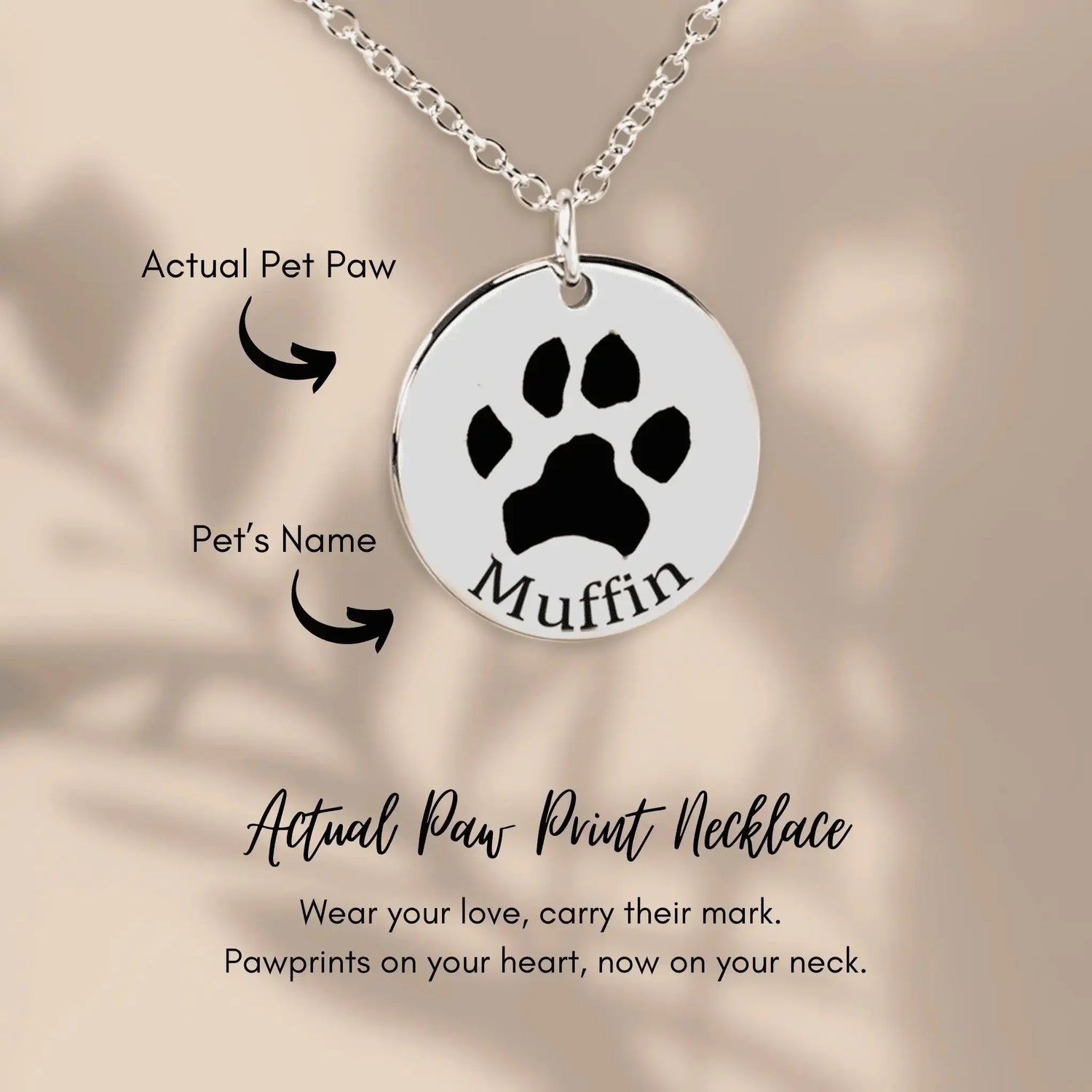Can Cats Be Allergic to Catnip? A Purrfect Guide for Fur-Parents
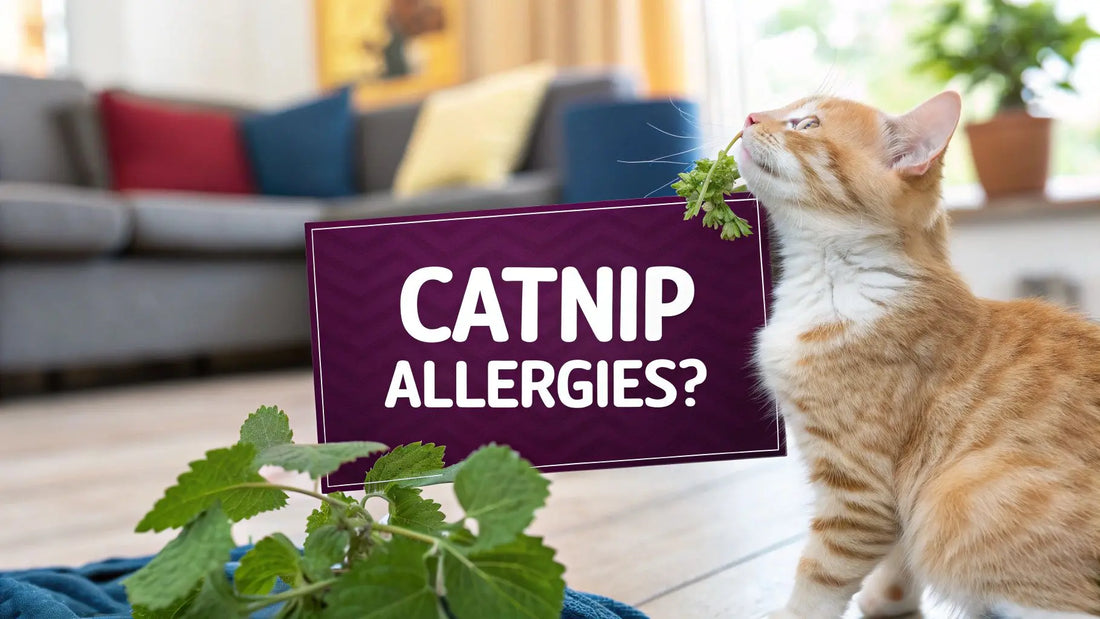
So, let's get straight to it: can cats actually be allergic to catnip? 🙀
The short answer is that a true, full-blown allergy is incredibly rare. Think of it like finding a cat who genuinely dislikes sunbeams—it's paw-ssible, but you're not likely to ever see it. Our fluffy mascot, Floofie, has seen thousands of kitties party with catnip, and he's yet to spot a true allergy!
That said, a small number of kitties can show some sensitivity, especially if they get a little too enthusiastic and nibble on a bit too much of the good stuff.
What’s Really Happening During a Catnip Reaction?
When our furry friends go absolutely bonkers for a catnip-stuffed toy, like our Kitten's First Catnip Toy, we're seeing a fun, euphoric reaction, not an allergic one. It's all thanks to a compound in catnip called nepetalactone, which lights up the "happy" sensors in a cat's brain. For the overwhelming majority of felines, this is a completely harmless and joyful experience. ✨
A sensitivity usually just means they’ve overindulged. This might lead to a simple sneeze, a bit of drooling, or maybe a mild tummy ache from eating the plant material. True allergies, on the other hand, involve a much more serious immune system response, which is almost unheard of with catnip.
This quick infographic puts the rarity of a true allergy into purr-spective, showing how most cats react.
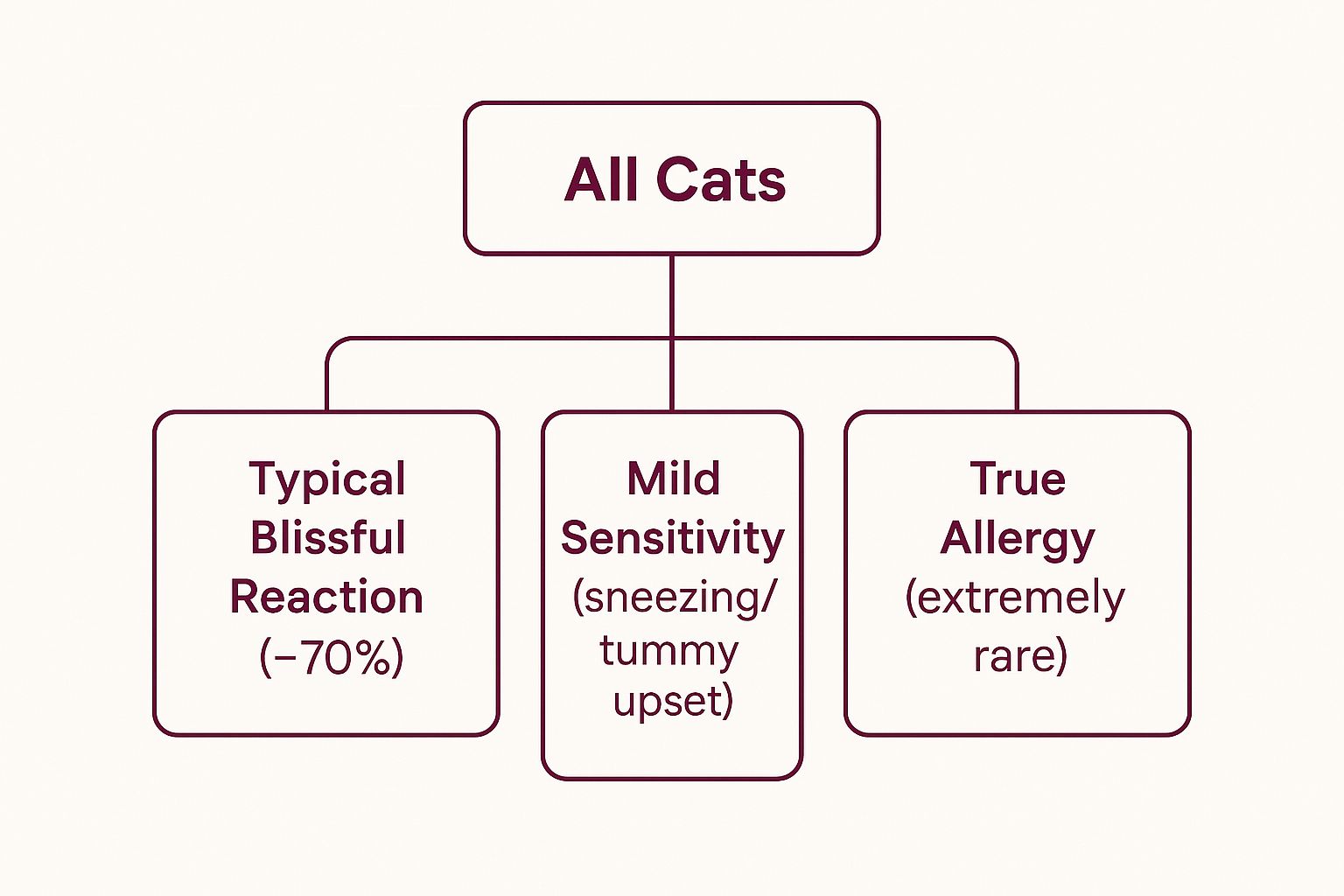
As you can see, that blissful, goofy reaction is by far the most common outcome!
While we're focused on catnip here, it's always helpful to understand the bigger picture of pet sensitivities. If you're curious, you can learn more about pet dander and general pet allergies to get a better sense of how allergies work in our furry companions.
Understanding the Difference Between Allergy and Sensitivity
It’s easy to mix up these two terms, but knowing the difference can help you figure out what’s going on with your cat. Floofie helped us break down the key distinctions.
| Symptom Type | True Catnip Allergy (Extremely Rare) | Catnip Sensitivity (More Common) |
|---|---|---|
| Immune Response | Involves a significant immune system overreaction (histamine release). | Does not involve a true immune response; more of a mild intolerance. |
| Skin Issues | Widespread hives, intense itching, swelling (especially around the face). | Minor, localized itchiness or redness if the cat rolls in a large amount. |
| Respiratory Signs | Difficulty breathing, wheezing, constant coughing. | An occasional sneeze or two from inhaling the dust or sniffing too closely. |
| Digestive Upset | Severe vomiting or diarrhea. | Mild, temporary stomach upset or a single instance of vomiting if they eat too much. |
| Overall Behavior | Lethargy, distress, signs of serious illness. | A little bit of hyperactivity followed by a long nap. Maybe some drooling. 😴 |
Ultimately, a sensitivity just means your cat might have overdone it, and the effects will pass quickly. A true allergy would be a much more alarming and persistent reaction.
Unpacking the Magic Behind Catnip
So, what's the deal with this magical herb that turns your prim and proper kitty into a silly, rolling fluffball? 🌿 The secret lies in a fascinating little compound called nepetalactone. It’s the superstar ingredient hidden within the leaves and stems of the catnip plant.
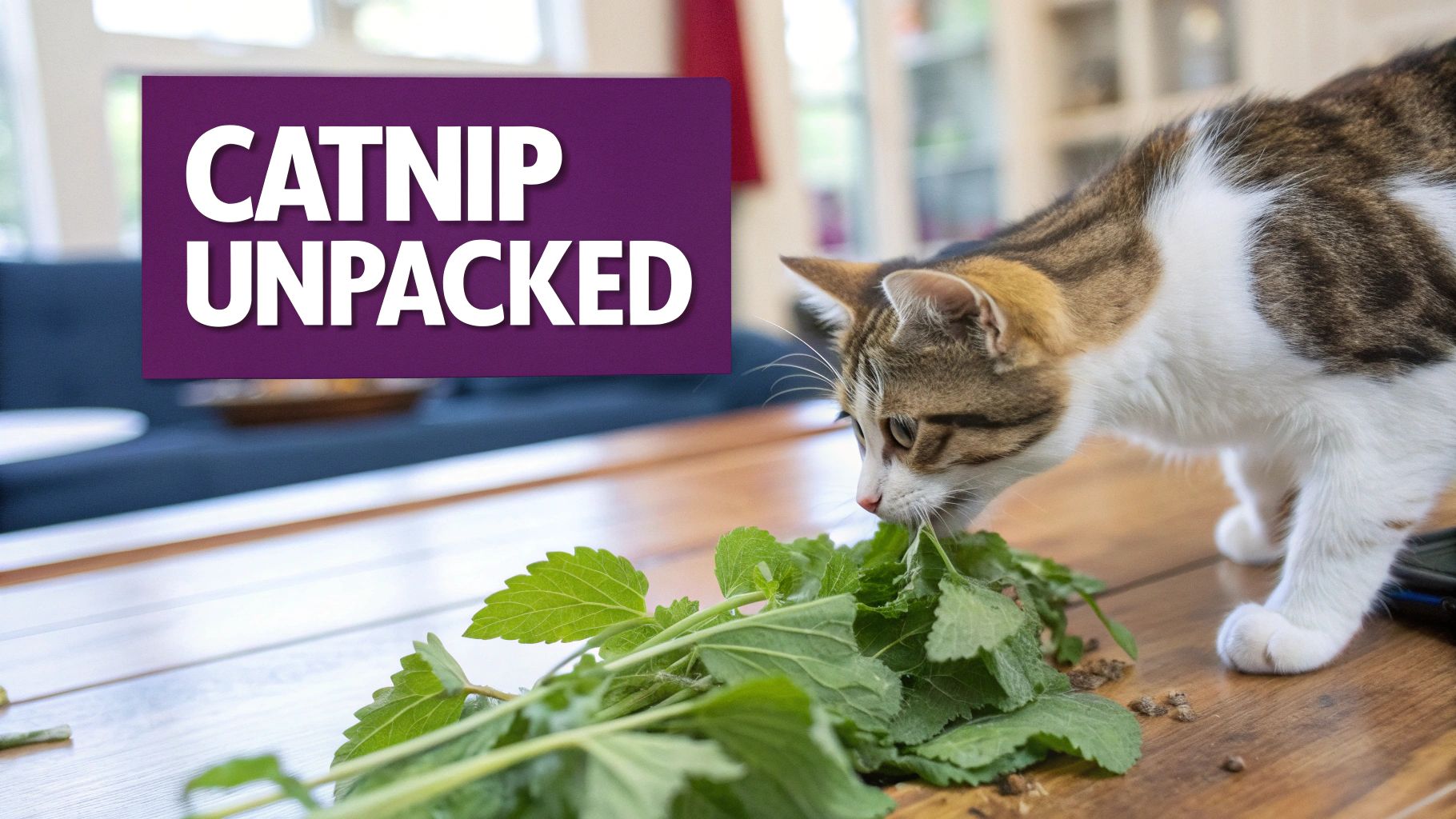
Think of nepetalactone as a secret, cat-only purr-fume. When your feline friend gets a good sniff, this molecule binds to special receptors inside their nose. That connection sends a flurry of euphoric signals straight to their brain, lighting up the areas associated with happiness and play. It's pure, harmless bliss!
This explains why one moment they're snoozing peacefully, and the next they're doing acrobatic zoomies around the living room. But this magical reaction isn't universal.
Why Some Cats Go Wild and Others Don't
Ever wondered why one of your cats might be doing backflips over a pinch of 'nip while the other just gives you a blank stare? 😼 It’s all in their genes! The sensitivity to catnip is a genetically inherited trait, affecting roughly 50-70% of the feline population. Some cats are simply born to party, while others are immune to its charms. You can learn more about feline genetics and catnip on cooperandgracie.com.
Floofie's Fun Fact: A cat's reaction is purely instinctual! Behaviors like rolling, rubbing, and purring are all part of the normal, happy response. It's their way of saying, "More, please!" 😻
This genetic lottery is why you should never feel bad if your kitty doesn’t react. It also explains why the question "can cats be allergic to catnip" comes up—owners see a strong reaction and worry, but it's usually just harmless genetic fun!
To cater to every kitty's preference, catnip comes in all sorts of forms. You can find everything from classic dried flakes and potent oils to super convenient sprays. Our mascot, Floofie, is obsessed with using our organic catnip spray to instantly make old, boring toys feel brand new again. It’s the purrfect way to spark joy! ✨
Spotting the Signs of Catnip Sensitivity
So, a true, full-blown allergy is incredibly rare, but how can you tell if your cat is just a little sensitive to the 'nip? Most of the time, any weird reaction happens when a cat decides to eat the catnip plant instead of just sniffing it. That's why our resident expert, Floofie, says the number one rule is to always supervise the first few catnip parties! 🥳
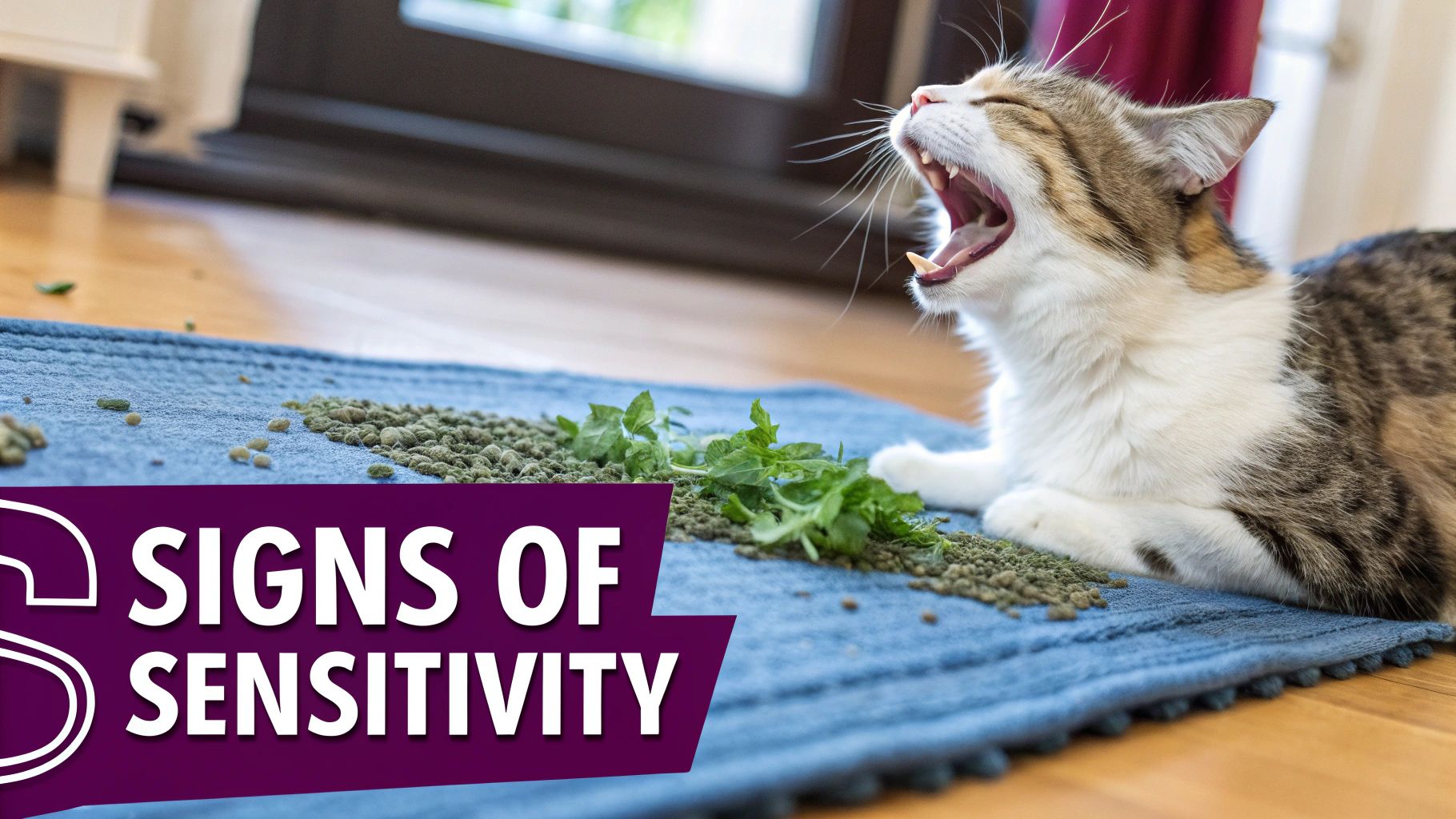
This lets you get a feel for your furball's unique reaction. Are those frantic zoomies a sign of pure joy, or are they a sign of being a bit overwhelmed? Watching them helps you learn the difference between happy excitement and potential discomfort.
Your Catnip Sensitivity Checklist
If you're asking yourself, "can cats be allergic to catnip?", you're probably looking for signs of a bad reaction. While a serious response is almost unheard of, you should keep an eye out for these more common tells of mild sensitivity:
- Sneezing Spells 🤧: A sneeze or two is totally normal, especially when they're burying their face in a dusty herb. But if the sneezing is constant, it might mean their little nose is irritated.
- Itchy Business 🐾: Did your cat start scratching a lot more after rolling around in a pile of catnip? You might notice some minor skin redness, too. This could be a sign of a mild skin sensitivity.
- Tummy Troubles 🤢: This is the most common sign, and it almost always comes from overindulgence! Eating too much catnip can lead to some mild vomiting or diarrhea.
Floofie’s Top Tip: If you spot any tummy upset, it's a clear signal to cut back on the catnip. Try offering a fun interactive toy instead, like our Smart UFO Cat Toy, which provides all the excitement without the risk of snacking! 🛸
Remember, these symptoms are typically very mild and don't last long. They usually just mean your kitty had a bit too much of a good thing. A true allergic reaction involving breathing trouble or widespread hives is practically unheard of. As long as you supervise playtime, you can make sure every catnip session is a safe and blissful one for your best friend.
Introducing Catnip to Your Furball: A Step-by-Step Guide
So, you're ready to introduce your cat to the wild world of catnip? Meow-some! 😻 Let's make sure their first time is a truly fantastic experience. The secret to keeping catnip a special, fun treat is all about a slow and steady introduction.
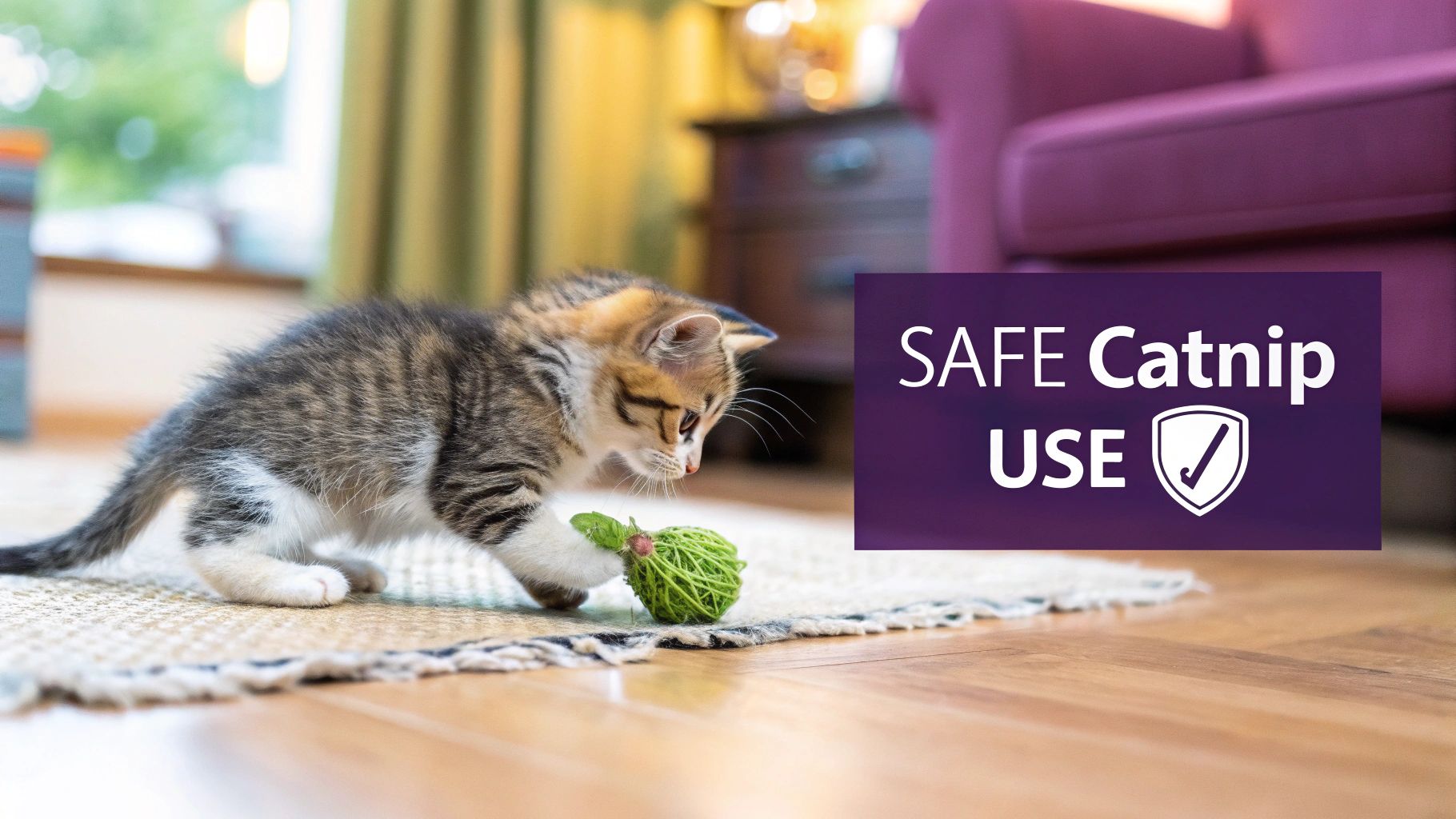
First things first: quality matters. Always opt for high-quality, organic catnip. Think of it like serving a gourmet meal—you want only the best ingredients, free from any pesticides or other nasties. Our mascot Floofie is a huge fan of our 100% organic catnip, which you can find in our Kitten's First Catnip Toy and Catnip Alternative Variety Pack!
When it's go-time, start with just a tiny pinch. A little goes a long way. You can sprinkle it on the floor or on their favorite scratching post. This "less is more" approach lets you gauge their reaction without overwhelming their senses.
Creating the Purrfect Play Zone
Next up, you'll want to make sure the area is safe for some potential shenanigans. Your cat might start rolling, rubbing, and getting the zoomies, so a supervised play session is an absolute must.
Here’s how to set the scene for success:
- Clear the Area: Move any breakables or potential hazards out of the way. A cat on a catnip high isn't always the most graceful creature!
- Stay and Supervise: Keep a close eye on your kitty during their first few introductions. This helps you understand their unique response and, most importantly, keeps them safe.
- Offer a Toy Instead: Sometimes, putting catnip inside a toy is a better option than leaving loose flakes around. It contains the mess and helps prevent them from eating too much of it.
Floofie’s First-Timer Tip: "For a kitten's first time, a pre-filled toy is the way to go! It's less intense and just as fun." We highly recommend our Kitten's First Catnip Toy starter pack—it gets two paws up for safety and fun! 🐾
By following these simple steps, you can confidently make catnip a joyful part of their enrichment, all while knowing you’ve minimized any risks.
Finding Fun Alternatives to Catnip
Is your kitty part of the 30% of felines who just give catnip a bored sniff and walk away? Or maybe they're a bit sensitive, and you're wondering if a cat can even be allergic to catnip. Don't worry! The party doesn't stop just because the 'nip isn't a hit. 🥳
There's a whole world of awesome, cat-safe herbs out there that can spark that same goofy, playful joy. Let's dive into some fantastic alternatives that might just become your cat's new obsession.
Beyond the 'Nip: The Best Herbal Alternatives
When catnip is off the table, it's time to explore other plants that can make cats go wild. Each one offers a slightly different experience, so it's fun to see which one perfectly matches your kitty's personality.
Here are a few of Floofie's absolute favorites:
- Silvervine (Actinidia polygama) 🌿: This is the undisputed champion of catnip alternatives! It’s often much more potent and even works on many cats who don’t respond to catnip. The reaction can be more intense, with lots of happy drooling, rolling, and rubbing.
- Tatarian Honeysuckle Wood 🪵: The woody sticks and shavings from this plant are incredibly exciting for most cats. It brings out their natural instincts to bat, chew, and rub against things.
- Valerian Root 😴: This one is a little different. It usually sparks a burst of euphoric playtime at first, but it's often followed by a wave of calm and relaxation. This makes it a great choice for kitties who deal with a bit of anxiety.
Floofie’s Final Tip: The best way to find a winner is to experiment! Our 'Catnip Alternative Variety Pack' lets your cat sample all these options to find their new obsession.
Pairing these new scents with engaging toys is a fantastic way to boost your cat's enrichment and keep them entertained. To learn more, check out our guide on the best interactive cat toys for indoor cats.
Your Common Catnip Questions Answered
Still have some lingering questions about this magical feline herb? We've got you covered. This is where we tackle the most common curiosities cat parents have, with clear answers from our team (and a few meows of approval from Floofie, of course!).
How Much Catnip Is Too Much for My Cat?
When it comes to the 'nip, less is definitely more. Think of it like a fine dessert—best enjoyed in moderation! A small pinch of the dried stuff or one catnip-infused toy, like our awesome Kitten's First Catnip Toy, is all you need for a single play session.
That wild, goofy energy usually lasts for about 10-15 minutes. After that, your cat will likely become immune to its effects for a couple of hours. To keep things exciting and special, try offering it as a treat a few times a week instead of every day. This helps prevent overstimulation and keeps their tummy happy.
Can I Give Catnip to My Kitten?
That's a fantastic question! 🐾 If you've offered a catnip toy to your tiny tiger and gotten nothing but a blank stare, you're not alone. Kittens typically don't develop the ability to respond to catnip until they're somewhere between six months and a year old.
The gene responsible for that zany reaction just needs a little time to switch on. It’s completely safe to offer, but don't be discouraged if they just sniff and walk away. They're not ready to join the party just yet—try again when they're a bit older!
Is It Possible for My Cat to Overdose on Catnip?
You can breathe a huge sigh of relief on this one. It's not possible for a cat to fatally overdose on catnip. Most cats are surprisingly good at self-regulating and will simply wander off once they've had their fill of fun. A clean, fresh-smelling home can also help them feel calm and grounded; learn more in our guide to pet-friendly incense.
In the very rare event that a kitty gets a little too enthusiastic and eats a large amount, the worst you're likely to see is some mild tummy upset, like vomiting or diarrhea. Just remember that moderation is the key to making sure catnip stays a positive, fun experience for your furry best friend.
At FloofChonk, we believe every cat deserves a dose of delight. Explore our collection of premium, organic catnip and toys designed to make every playtime unforgettable! Visit our shop today!
